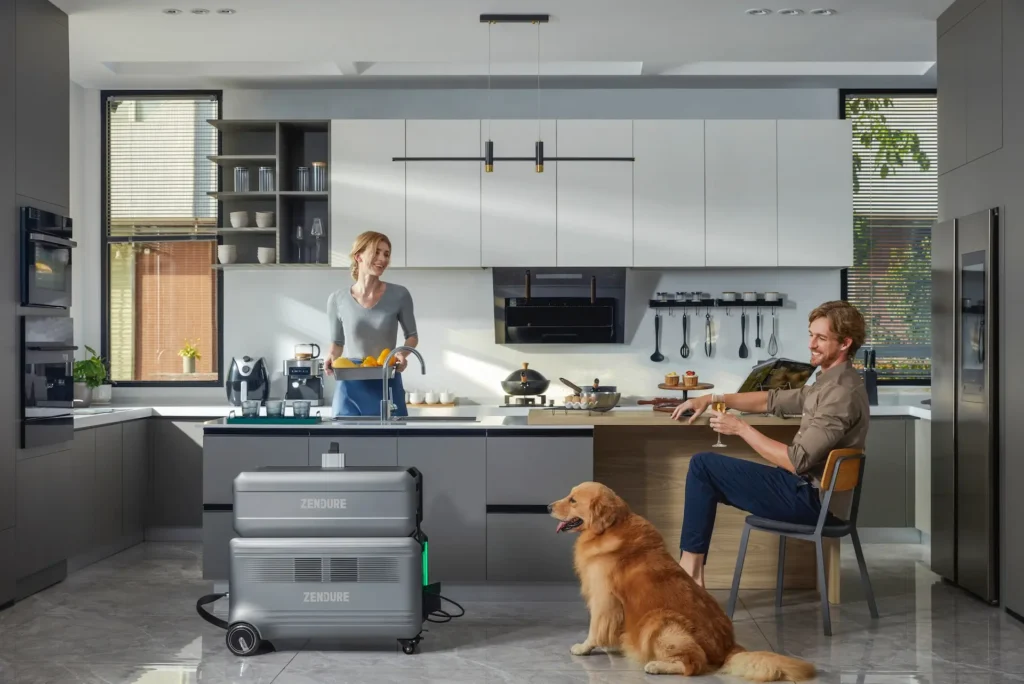Imagine this: you’re in the middle of cooking dinner when the power goes out. Your refrigerator is humming away, but you know it’s only a matter of time before your food starts to spoil. What do you do?
One option is to throw out all of your food and start over. But that’s a waste of money and resources. Another option is to call a friend or family member who has power and ask them to store your food for you. But that’s inconvenient and may not be possible if everyone else is also experiencing a power outage.
The best solution is to power your refrigerator with a generator. But how do you do that safely and effectively?
In this article, we’ll teach you everything you need to know about How to Power a Refrigerator by Generator. We’ll cover topics such as how to choose the right generator, how to connect it to your refrigerator, and how to use it safely.
But first, here’s a question for you:
Is it really worth it to power your refrigerator with a generator?
After all, generators are expensive and noisy. And if you don’t know how to use them properly, you could put yourself and your family at risk.
So, is it worth it?
That’s up to you to decide. But if you do decide to power your refrigerator with a generator, be sure to read this article carefully. We’ll teach you everything you need to know to do it safely and effectively.
Let’s get started!

First Things First – Calculate Your Refrigerator’s Power Needs
Before you can pick out a generator, you need to know how much power, or wattage, your specific refrigerator requires.
Start by looking at the nameplate inside your refrigerator, usually near the front. Write down the volts and amps listed. Then, use this simple formula to find the running wattage:
Volts x Amps = Watts
For example, if your fridge is 115 volts and 7 amps, multiply 115 by 7 to get 805 watts.
Now, refrigerators need an extra surge of electricity at start-up to get the compressor going. A good rule of thumb is to multiply the running wattage by 1.5 to get the surge wattage needed.
So for our 805-watt fridge, 1.5 x 805 = 1,207 peak start-up watts.
Knowing both the running and surge wattage will ensure you pick a generator that can handle your refrigerator’s demands.
Choosing the Right Generator
Use the wattage numbers you calculated to select a generator with enough power output. You want to make sure the generator’s rated wattage exceeds the surge wattage needed by your refrigerator.
This prevents issues like overload, which could lead to tripping the generator’s breaker or blowing a fuse. Not fun when you’re relying on it in an emergency!
For most standard refrigerators, I’d recommend at least a 1000W-rated portable generator. That should give you plenty of cushion for the surge in demand.
A 1200W or higher-rated generator is even better and will allow you to connect additional appliances if needed. The exact model you choose depends on your budget and needs.
Recommended Topics:
- List of Best 2000 Watt Generators
- List of Best 4000 Watt Generators
- List of Best 5000 Watt Generators
How to Power a Refrigerator by Generator: Connecting Refrigerator to Generator
- Position the generator outdoors on a flat, stable surface, at least 10 feet from your home or any structures.
- Run a heavy-duty, outdoor-rated extension cord from the generator to the refrigerator’s location. Use at least a 14 gauge cord for refrigerators.
- Plug the cord into the outlet on the generator first, then into your refrigerator directly instead of using the wall outlet.
- Start up your generator, let it reach full speed, then turn on your refrigerator.
- Listen and watch that it powers on and starts cooling normally. Check the cord and connections for warmth in case of any issues.
Operating and Maintaining Your Generator
Be sure to follow all the manufacturer’s guidelines for safe operation and maintenance.
Always check fuel levels before starting and refill your generator with enough gas for the expected runtime. Inspect the cords and connections regularly for any damage to avoid hazards.
When it’s time for maintenance, always shut off and disconnect the generator first. Taking proper care will ensure a long service life.
FAQs
Let’s go over some common questions about powering refrigerators with generators:
How much power does a refrigerator use with a generator?
Most fridges use 700-1200 watts while running.
What size KVA generator is needed to run a refrigerator?
For most fridges, a 3500-5500W generator will work well.
Can a 1200W generator run a fridge?
Yes, a 1200W portable generator can safely power most standard refrigerators.
What size generator is needed to run 2 refrigerators?
Two fridges will likely require at least a 2500W generator for simultaneous operation.
How long should you run a generator for a refrigerator?
Run the generator continuously until power is restored to maintain proper cooling.
Can improper use of a generator damage a refrigerator?
Yes, overloading the generator or faulty wiring can potentially damage the fridge.
And there you have it, a complete guide to safely powering your refrigerator with a portable generator during an outage. The key is choosing an adequately sized generator and connecting it properly to keep your food cold and safe for consumption.
Let me know if you have any other generator or fridge operation questions!




